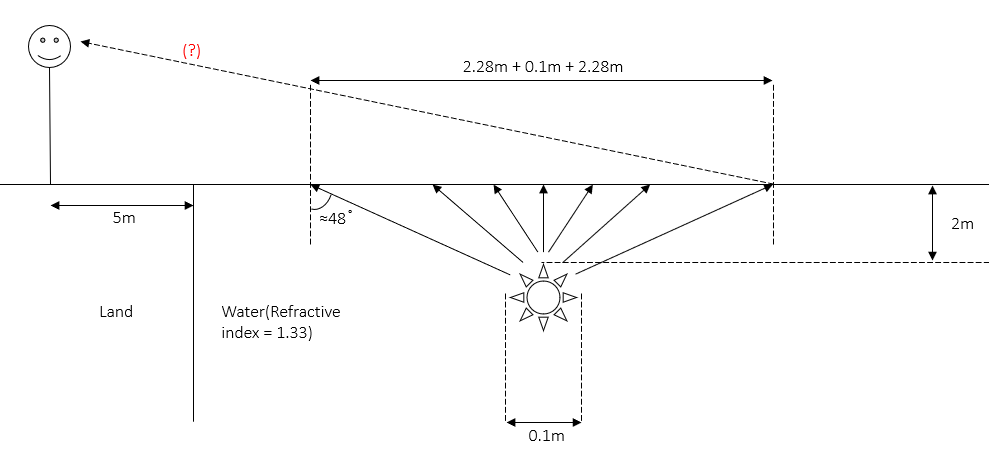I came across this question
A lightsource of diameter 10cm is placed 2m underneath the surface of a pool, a person
5m away from the edge of the pool saw a circle of light emitting from the lamp.
Calculate the maximum diameter of the circle of light seen by the person.
(Use refractive index = 1.33)
A lightsource of diameter 10cm is placed 2m underneath the surface of a pool, a person 5m away from the edge of the pool saw a circle of light emitting from the lamp. Calculate the maximum diameter of the circle of light seen by the person. (Use refractive index = 1.33)
I figured this would be something similar to that of Snell's Law and drew the diagram below:

The answer is indeed about 4.66m, however I am quite puzzled as to how the person could see the entire circular shape of light, given that some rays are travelling away from the person?
